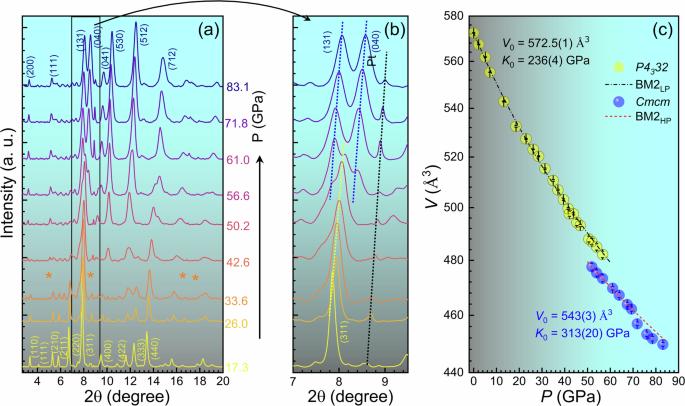Correlated electron physics near a site-selective pressure-induced Mott transition in α-LiFe5O8
IF 7.5
Q1 MATERIALS SCIENCE, MULTIDISCIPLINARY
引用次数: 0
Abstract
The Mott insulator-to-metal transition (IMT) driven by electron correlations has been among the main research topics in materials science over the past decades. The complex interplay between electronic and lattice degrees of freedom leads to various transition scenarios. Of particular interest may be the case of a transition involving the formation of complex phases comprising regions that differ significantly in their physical properties within the same material. Here, we present the results that advance the understanding of the IMT phenomenon, offering the documentation of a pure site-selective mechanism that is not complicated by any structural and spin transformation. Combining XRD, resistivity, Mössbauer and Raman spectroscopy measurements, we provide evidence for a pure pressure-induced Mott transition in α-LiFe5O8, characterized by site-selective delocalization of electrons, leading to the formation, above ~65 GPa, of a site-selective Mott phase consisting of metallic and insulating sublattices. We note that the electron delocalization in the partially disordered octahedral sublattice cannot be understood purely in terms of a Mott transition, the Anderson-Mott transition picture seems more adequate. The Mott insulator-to-metal transition occurs via multiple mechanisms in different materials. Here, such a pressure-induced transition in α-LiFe5O8 is found to occur via site-selective delocalization of electrons, leading to the formation of metallic and insulating sublattices.

α-LiFe5O8中位点选择性压力诱导莫特转变附近的相关电子物理学
过去几十年来,由电子关联驱动的莫特绝缘体到金属的转变(IMT)一直是材料科学领域的主要研究课题之一。电子自由度和晶格自由度之间复杂的相互作用导致了各种转变情况。尤其令人感兴趣的是,在同一种材料中,由物理性质差异显著的区域组成的复杂相的形成过程。在此,我们展示了推进对 IMT 现象理解的研究成果,提供了一种不受任何结构和自旋转变影响的纯位点选择机制的文献资料。结合 XRD、电阻率、莫斯鲍尔和拉曼光谱测量,我们提供了α-LiFe5O8 中纯粹的压力诱导莫特转变的证据,其特点是电子的位点选择性失焦,导致在 ~65 GPa 以上形成由金属和绝缘亚晶格组成的位点选择性莫特相。我们注意到,部分无序八面体亚晶格中的电子析出不能纯粹从莫特转变的角度来理解,安德森-莫特转变的图景似乎更为恰当。在不同的材料中,莫特绝缘体到金属的转变有多种机制。在这里,我们发现α-LiFe5O8 中的这种压力诱导转变是通过电子的位点选择性脱ocal发生的,从而导致金属和绝缘亚晶格的形成。
本文章由计算机程序翻译,如有差异,请以英文原文为准。
求助全文
约1分钟内获得全文
求助全文
来源期刊

Communications Materials
MATERIALS SCIENCE, MULTIDISCIPLINARY-
CiteScore
12.10
自引率
1.30%
发文量
85
审稿时长
17 weeks
期刊介绍:
Communications Materials, a selective open access journal within Nature Portfolio, is dedicated to publishing top-tier research, reviews, and commentary across all facets of materials science. The journal showcases significant advancements in specialized research areas, encompassing both fundamental and applied studies. Serving as an open access option for materials sciences, Communications Materials applies less stringent criteria for impact and significance compared to Nature-branded journals, including Nature Communications.
 求助内容:
求助内容: 应助结果提醒方式:
应助结果提醒方式:


